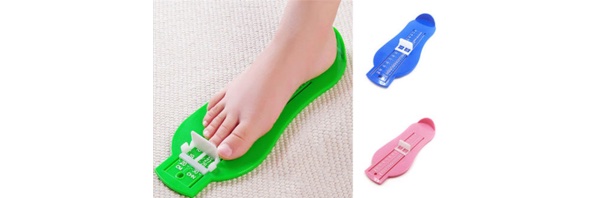From the survey, it emerged that two-thirds of children wear shoes that are too tight: of these, 47% are wearing one size too small, while 18% are even wearing shoes two sizes too small! Only 35% of children wear the right shoe size, and of them, only 11% have sufficient room for “growth”.
Moreover, 52% of the parents polled declared that they have never measured the length of their children’s feet, having solely based themselves on the look and feel of the shoes.
So, what is the right approach to take when measuring the feet? The wrong approach to take would be that of placing the sole of the shoe against the bottom of the foot, since it does not allow the inside length of the shoe to be correctly identified. Just as incorrect is the ‘rule of thumb’ test, where the width of your thumb is used to measure the space between the toes and the end of the shoe, since often children in reaction to this test will curl their toes up. It is just as pointless to ask children how the shoes feel, because they have a sensitivity different from adults and they might not notice just how tight the shoe is because they have a different perception of pain.
So, there are three step to take when it comes to measuring the foot correctly: measure the longest foot (between the two feet there might even be a difference of one size!), place the foot on the inner sole, while ensuring there is one centimetre of extra space in the toes and half a centimetre of extra room in the heel area. Now you can be sure that your child is wearing the right size. But don’t get too comfortable quite yet: remember to regularly check the size of your child’s feet at least once every two months, so you can closely follow their growth.
Another useful tool is the foot-measuring device, which in its size calculation, already includes the extra room needed for growth.
The guide to measurements, conversions, and information for purchasing can all be consulted on the site www.blitzresult.com/it/scarpe-bambini/.



